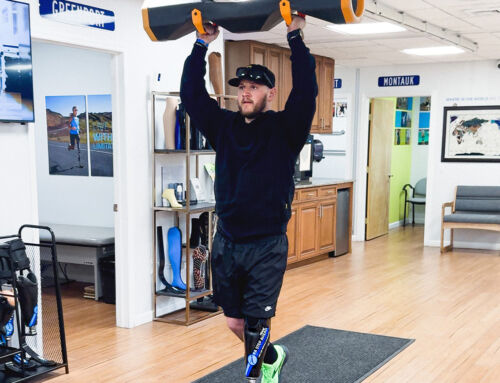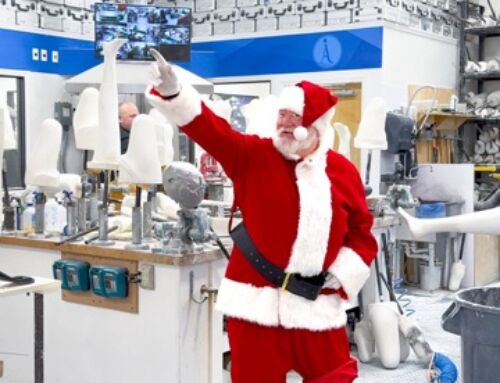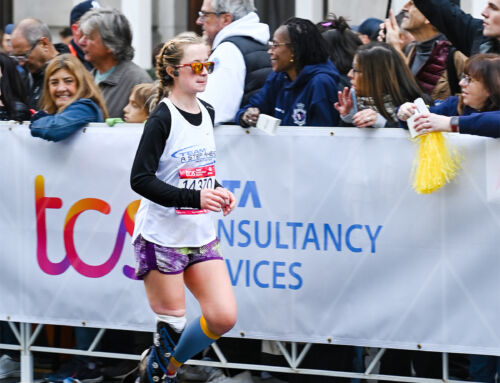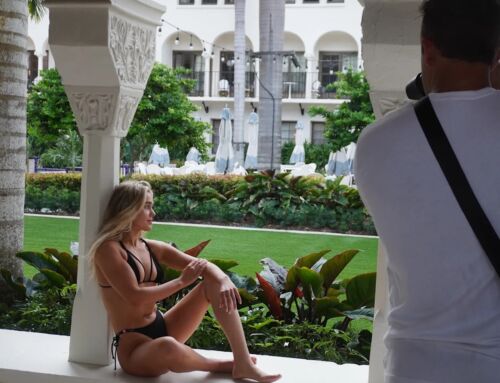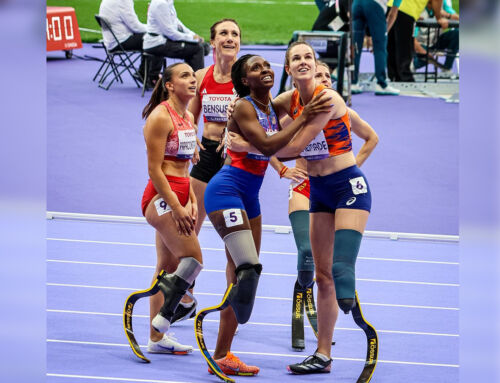“Fashion is a perfect arena to explore these larger societal conversations around inclusivity.”
Aimee Mullins has a dizzyingly impressive resumé. As a model, she’s shot with top photographers, including Steven Klein and Inez and Vinoodh; covered magazines like Dazed; and opened runway shows for the late Alexander McQueen, who counted her as a muse. As an athlete, Mullins has been awarded for her performances in track and field and was appointed a leader of the U.S. delegation at the 2012 Olympics. And as an actor, Mullins has been in more than 10 feature films, most recently appearing in cult-favorite Netflix show “Stranger Things.”
To call her “disabled” when she’s accomplished so much more than most “able-bodied” people will in a lifetime calls into question what either of those terms actually means. But whatever you call it, the facts are that Mullins is a bilateral amputee, whose legs have been amputated below the knee since she was a year old. While it can be easy to reduce disabled people to either tragic sob stories or spotlessly inspiring successes, Mullins is more interested in helping erase the boundaries between the “able-bodied” and the “disabled” in the first place — and she’s long seen fashion as a means to that end.
“[In the past] I had people say to me, ‘Gosh, you’re really pretty! You don’t look disabled.’ It was my first insight into like, ‘Oh, there’s an us-and-them paradigm, and you see me as other,'” she said via Skype during a panel hosted by FIT as part of the school’s “Fashion and Physique: A Fashion Symposium,” held on Friday in New York. Fashion, Mullins says, provided an “under the radar” means of becoming an advocate that circumvented all the awkwardness of people not knowing how to talk to her about her prosthetics or her general experience of the world.
It was her athleticism that first connected her to the world of design. In her quest to be the “fastest woman in the world on prosthetic legs,” Mullins was the first person to ever wear the “Cheetah” sprinting legs that are now so commonly seen on Paralympians. Prior to that, it was difficult to find prosthetic legs that looked like anything other than an inflexible version of the average human leg, which was not ideal for sprinters like Mullins.
“That idea of designing these carbon-fiber legs that were modeled off of the back legs of a Cheetah was the start, for me, of blowing it wide open,” Mullins explained on the panel. “[It led me to ask,] ‘Why can’t I have glass legs? Why can’t I have legs covered in peacock feathers if I want? Why does this thing always have to have such a heavy social representation of loss, instead of being about something fun and beautiful and creating a wearable sculpture?”
Wearable sculpture is exactly what followed. As Mullins’ athletic prowess began to merit more media attention, she suddenly found herself being asked to fly to London by none other than Nick Knight and Alexander McQueen. Mullins went on to open McQueen’s Spring 1999 show, where she wore prosthetic legs carved so beautifully from solid ash that editors later reached out to the brand asking to borrow the “boots” for editorial shoots, not realizing that they could only be worn by people with legs like Mullins’.
“When I used Aimee for [this collection], I made a point of not putting her in…sprinting legs [prostheses for running]….We did try them on but I thought no, that’s not the point of this exercise. The point is that she was to mold in with the rest of the girls,” said McQueen in a 2000 interview with i-D.
Since then, Mullins has added a whole host of different prosthetics to her arsenal, including sculptural pieces that look like glass jellyfish and Barbie-like legs that are specially formulated for wearing high heels. “Lee McQueen gave me these shoes kind of as a dare,” Mullins laughed, projecting a picture of 4-inch heels onto a screen. “There were no [prosthetic] legs high enough to wear a heel like that.”
Until she found someone willing to make them, that is. Mullins went on to joke that with her genes she would “never have inherited those [shapely] ankles; my family has cankles all the way,” and also said that she thought her ability to play with her height so drastically simply by choosing a different prosthetic is part of what made runway modeling an option for her. But it wasn’t just her easily adjustable height and natural beauty that made Mullins a fashion darling. An articulate charmer with a quick wit who jokes that swimsuit calendar models have more prosthetics in their noses and boobs than she does in her legs, Mullins has the kind of personality that it’s easy to see photographers and designers falling in love with.
And while she recognizes that fashion has its limitations, Mullins is ultimately glad for the power it has to change how people see one another, no matter their body’s abilities.
“When I do wear prosthetics that really play with the aesthetic function, it changes the conversation,” she said on the panel at FIT. “It changes how I feel about my body, it changes how people interact with me… Fashion is a perfect arena to explore these larger societal conversations around inclusivity.”
Source: https://fashionista.com/2018/02/aimee-mullins-fashion-disability-fit-symposium
